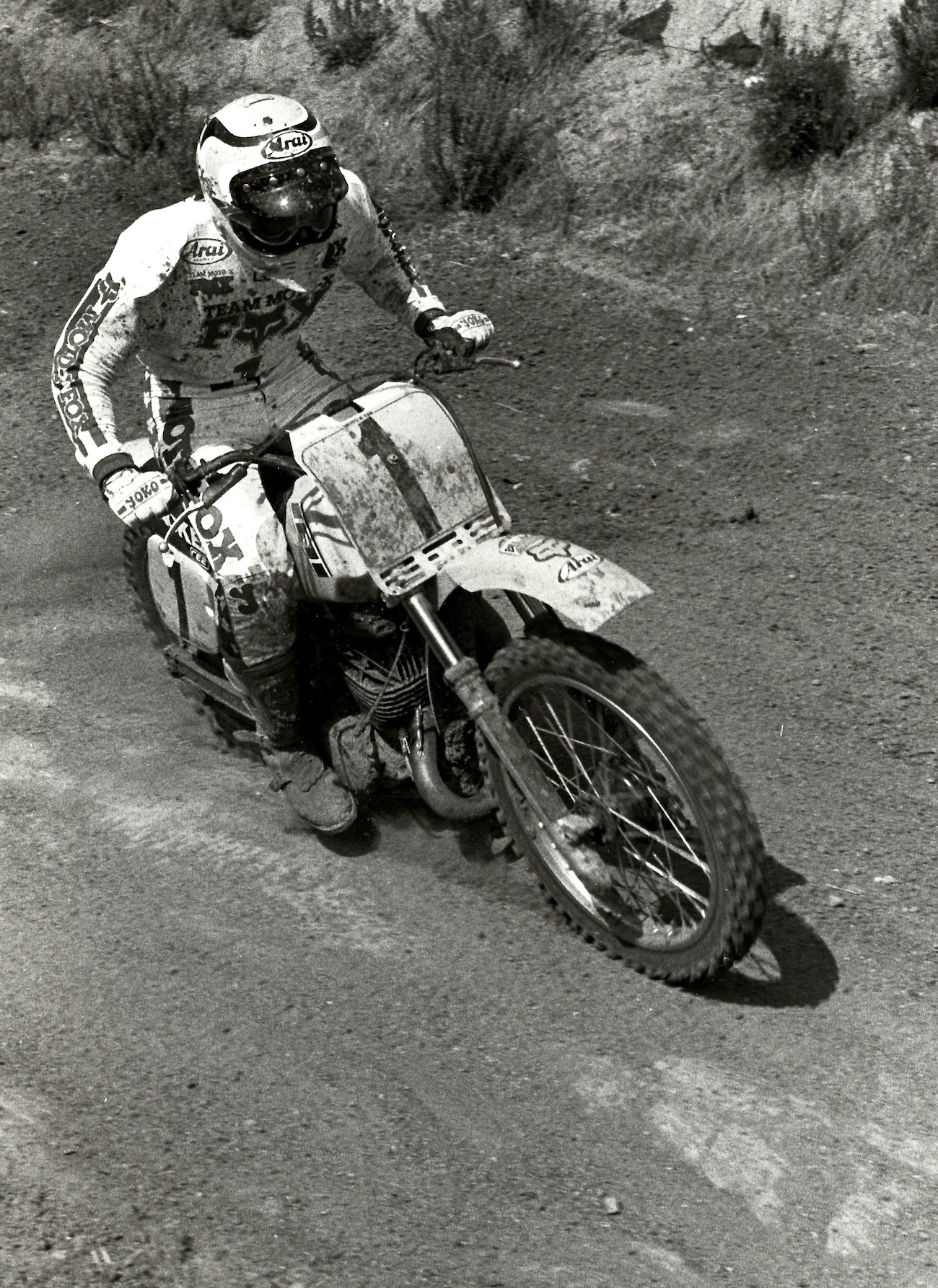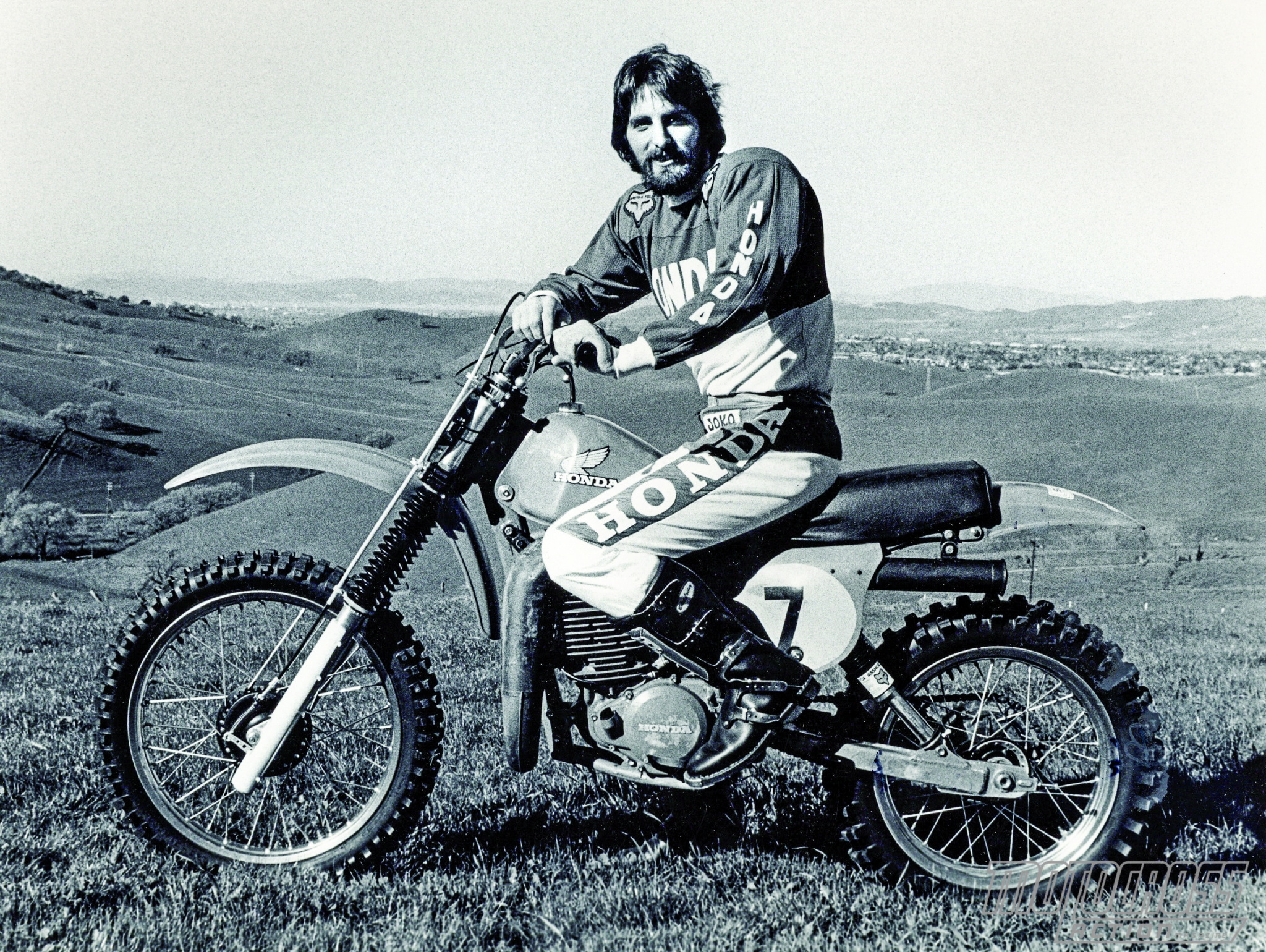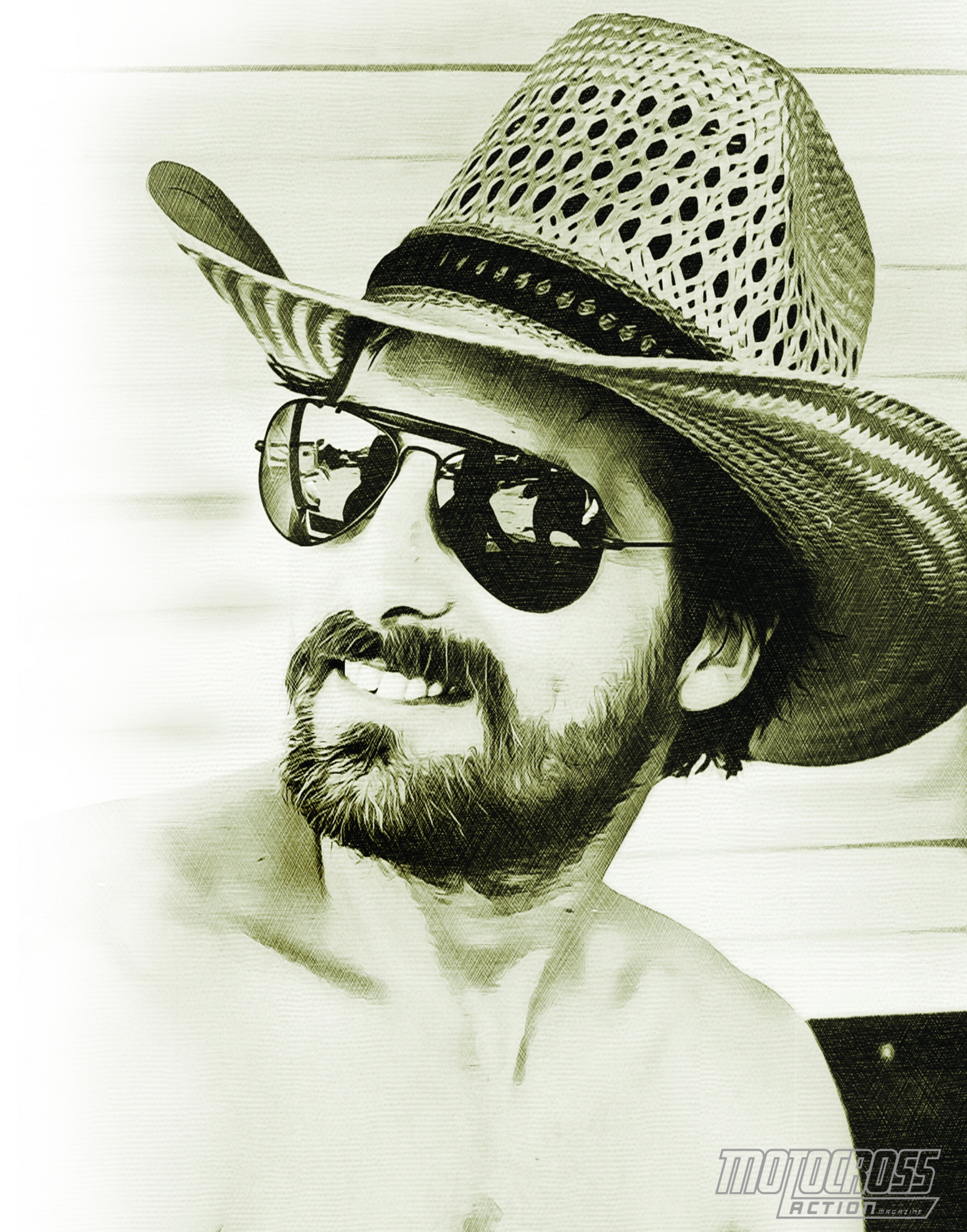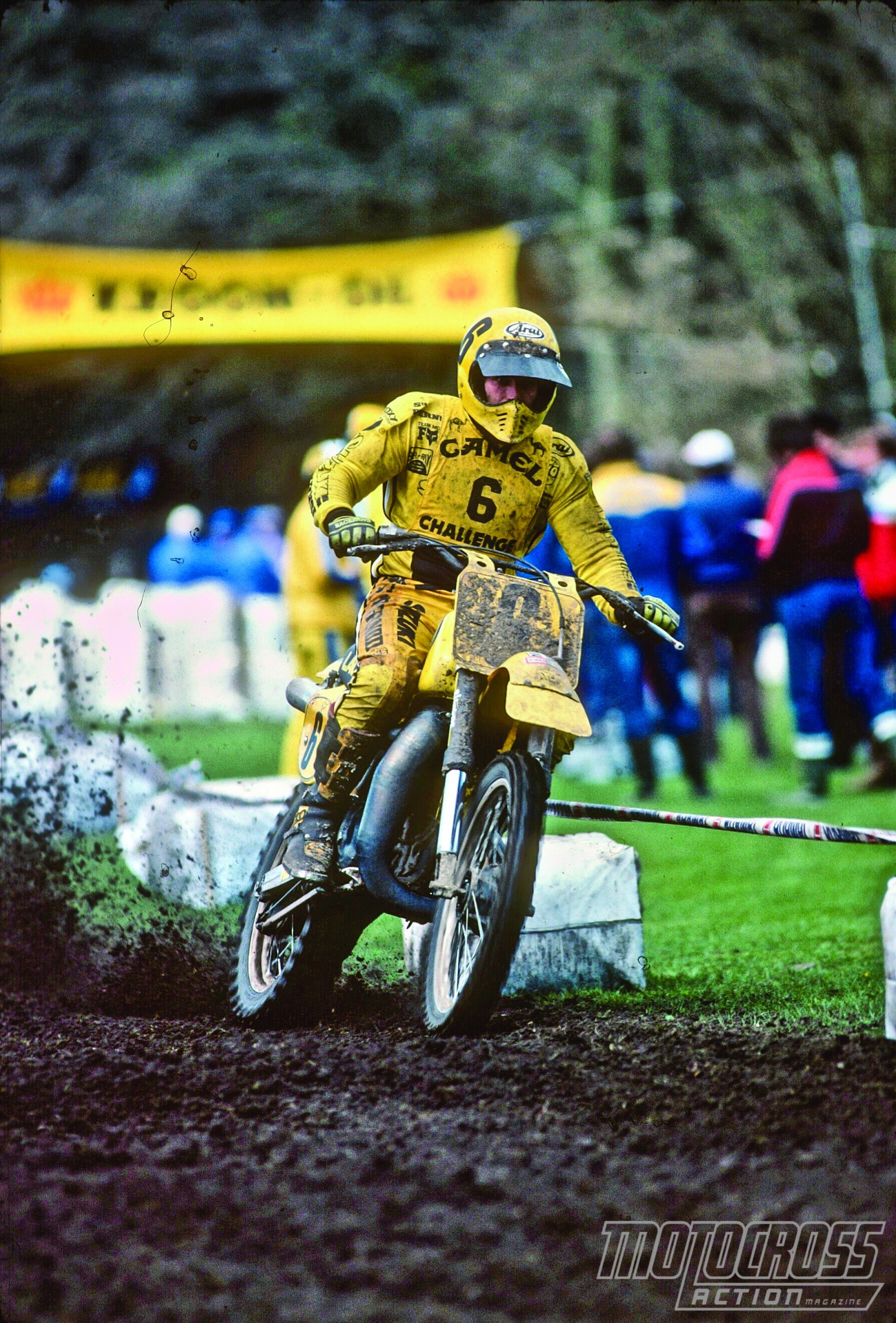MXA INTERVIEW: BRAD LACKEY ON SWITCHING BRANDS TO THE TOP
BY JIM KIMBALL
DID YOU MOVE TO CZECHOSLOVAKIA AT 16 YEARS OLD? When I was 16, the CZ guys asked me, “Do you want to go to Europe to ride some Grand Prix events and work at the CZ factory?” I said, “Yes, that would be exactly what I want.” So, in 1971, I went to Czechoslovakia for six months. I rode six 250 Grands Prix and won the 500 Grand Prix in Czechoslovakia. I worked at the factory every day. I trained with the CZ guys and would go to the GPs on the weekend with my Czech mechanic. I had a little trailer and car, and I would take Gaston Rahier’s Factory CZ and my CZ to the races for Gaston. My mechanic was his mechanic too, so he worked on both bikes.
IS IT TRUE THAT YOU LIVED IN A CABIN? Yes. I lived in a one-room cabin with no electricity and no water. My only other option was to stay in the CZ factory housing. It was a dormitory with four bunks in a little tiny room. The guys in the dorms were 40 years old, and they looked 100 because I was only 16. I talked to a mechanic who spoke some English, and he said that his family owned a summer house just out of town. They let me stay there. I used to hunt for pheasants and rabbits with a bow and arrow to get something to eat. When I went back to visit the CZ factory a few years ago, my arrows were mounted on the wall of the cabin. The son told me that the family kept my arrows as “a tribute to you from your time living here.” It was really cool.
WHAT WERE THE GPs LIKE FOR A 16-YEAR-OLD KID? I went to all the communist ones, not the ritzy Belgian, French and British ones. I got 11th at Yugoslavia and just about cracked the top 10 in one of them, but you know the Europeans were so far ahead of us at that time. Joel Roberts was just killing everybody. I learned a lot, and when I came home in 1972, I won every race I rode. I won every 500 National that year.
“THE CZ GUYS WERE GIVING ME CHALKBOARDS THAT READ ‘#1.’
WHEN THE RACE WAS OVER, I LEARNED THAT I HAD LOST THE
500 NATIONAL CHAMPIONSHIP BY ONE POINT TO BLACKWELL.”

BUT DIDN’T YOU LOSE THE 1972 AMA 500 NATIONAL CHAMPIONSHIP TO MARK BLACKWELL? Yes, that is true. CZ was not aware that the AMA was going to take the best 9 out of 12 races. CZ didn’t know this, and I was just riding around where I was because I had the most points from all 12 races. The CZ guys were giving me chalkboards that read “#1.” When the race was over, I learned that I had lost the 500 National Championship by one point to Blackwell. I could have easily made those points up if I were told about it.

IN 1972 YOU RACED FOR CZ AND KAWASAKI AT THE SAME TIME. WHAT WAS THAT ABOUT? I was a test rider for Kawasaki in late 1971 and, in 1972, they got their Open Class prototype done. I had a contract with CZ for the 250 Nationals and with Kawasaki in the 500 Nationals. Nobody cared back then; Kawasaki was happy to get wins with their new bike. Back then, you could ride both classes. At Hangtown, I rode the 250 class and the 500 class on the same day. I won the 500 Championship in 1972 and had the 250 title in the bag, too—until my tranny fell off. It was a much different time back then.

YOU DOMINATED THE 1972 500 NATIONAL SERIES. WAS THAT A SPECIAL TIME FOR YOU? Yes, it was the first Championship for Kawasaki and for a Japanese manufacturer. We had a good relationship, but in my contract, I had a clause that if I won the AMA National Championship for them, I could stay in the USA or go race the Grands Prix. So, after I won the title, we had the big party and I told everyone, “Remember, if I won, I could decide where to race. I don’t want to stay here. I beat everybody here easily. I’m not going to get any better doing that again, so I have to go to Europe and learn from the big guys.”
Kawasaki was not happy. They wanted me to stay here and have the number-one plate on their bike. I understood where they were coming from, but they made the deal and signed it. So, I went to Europe without much Kawasaki support. It did not work out, but I got more GP experience and learned a lot. I got my feet wet, so in 1974 when I signed with Husqvarna, I knew everything I needed to know. Within a year, I won a GP moto or two, and then later on with Husky things went up from there.
“HONDA SAID, ‘WE MAKE THE BIKE, AND EVERYBODY RIDES THE SAME ONE.’
KAWASAKI WAS MORE FORWARD-THINKING AND SAID, ‘JUST BUILD IT HOWEVER YOU CAN GO THE FASTEST, AND THAT IS THE
WAY IT IS.’ I LIKED THAT PART.”

COULD YOU HAVE STAYED WITH KAWASAKI AND MADE MORE MONEY IN THE STATES? Oh, without a doubt. I could have stayed and made a ton more money, but that is not what I was looking for. Kawasaki had no interest in the 500 GP class. Yamaha did not even have a bike, and Suzuki had Roger DeCoster and Gerrit Wolsink. Suzuki was the only Japanese company at that time that was doing something. I went to Husqvarna because they had Heikki Mikkola on their team, and he was one of the top guys. Husqvarna was committed to GPs, and that was the team I wanted to be on.
WHAT MOVED YOU TO LATER SWITCH TO HONDA? Honda was getting serious, so I switched to Honda for 1977 and 1978. They came in with great bikes and were serious about the 500 class. They dabbled around with Pierre Karsmakers in 1976 with the 500, but they did an amazing job developing the 1977 bike. I won my first overall GP on that bike. But, then I crashed at the start in Luxembourg and got tangled with Heikki off the line. We were both going for the 1978 FIM 500 World Championship, with only Luxembourg and Holland left as the final two races. We got our handlebars tangled, and I got sideways in front of everyone else. I got run over, got hit in the back and was paralyzed for a short time. I got what they called a “stinger.” I could not move my legs or arms, so they took me to the hospital for X-rays. I was at the hospital for an hour before it wore off. So, I missed two motos at Luxembourg and two motos in Holland but still got second behind Mikkola in the 1978 500 World Championship. The Honda bikes were good, and I was getting better. Still, I doubt that I would have beaten Heikki that year; his Yamaha was working well.
THEN, AFTER THE TWO YEARS AT HONDA, YOU WERE BACK AT KAWASAKI. That’s right, I switched back to Kawasaki in 1979, but it was a bit premature. I had a good relationship at Kawasaki, and I could do whatever I wanted to the bike, which was very important to me, because they would make the bike fit the rider back in those days. Honda was different. They said, “We make the bike, and everybody rides the same one.” Kawasaki was more forward-thinking and said, “Just build it however you can go the fastest, and that is the way it is.” I liked that part.
But, I moved to Kawasaki too soon. They had told me that the development on the Uni-Trak was further along than it really was. I feel that 1979 was the year that I should have won the 500 World Championship. I was dominant that year. I was in the best shape ever, but the bike was just not there. I won a decent number of motos, but my bike broke in seven motos. I had missed the Championship in 1978 when I finished second to Heikki Mikkola. In 1979 my Kawasaki broke too many times, and in 1980, I got railroaded again in the Andre Malherbe incident when he center-punched me, so I lost three Championships in a row.

TELL US ABOUT THE ANDRE MALHERBE INCIDENT. We were both going for the Championship in 1980, and at the last race in Luxembourg there were only a couple of points between us. He was very aggressive and had 60,000 fans rooting for him. He center-punched me in the first moto, and I was on the ground. I did make it up to finish fourth by moto’s end, though. I led moto two, eventually winning, and would still win the Championship unless he finished second, which he ended up doing. That was that, and I ended up finishing second in the Championship again.
WHAT WAS YOUR PROGRAM IN 1982 THAT LED YOU TO THE TITLE? For the first time, I stayed home in California during the off-season. For 10 years I had been going to Europe in January, doing all the international races in all the mud and snow. Prior to 1982, I decided I was not going to do that. I stayed home and rode the Golden State series in California. I got to try everything that we wanted to test on the bike before the GP series. We stayed in California and tested all of January, February, March and April before I flew directly to the first 1982 Grand Prix in France. We showed up ready to prove that our bike was better than what we got directly from the factory. In 1982 my bike finished 23 out of 24 motos, and the only time we had a problem was when I broke a shock in half in Canada. I would have won that GP, too. That DNF cost me 15 points. It tightened things up and gave the other guys some hope, but with three races left, I won the title.
“RIGHT AFTER THE LAST RACE THE JAPANESE BOSS CAME OVER AND CONGRATULATED ME ON WINNING. I SAID, ‘I TOLD YOU SO.’
AND HE SAID, ‘WE’RE NOT RACING NEXT YEAR.’ ”

YOU WON THE WORLD CHAMPIONSHIP, BECAME THE FIRST AMERICAN WORLD CHAMPION AND SUZUKI PULLED THE PLUG? They beat Honda for the first time in six or seven years, won the Manufacturers Championship, got everything they could possibly want, and then they quit. Suzuki also won the 1982 125 World Championship and got second in the 250 class behind Danny LaPorte.
HOW DID THEY INFORM YOU THAT THEY WERE QUITTING MOTOCROSS? Right after the last race, the Japanese boss came over and congratulated me on winning. I said, “I told you so.” And he said, “We’re not racing next year.” My contract was done, so there was nothing to do about it. Everybody was tightening their belts. Nobody was spending money. Suzuki quit. Kawasaki only had Dave Thorpe, and Yamaha had Hakan Carlquist. The only full team was Honda. Everybody else was down to bare bones. There was no place for me to go.
DO YOU THINK THAT SUZUKI WAS ANGRY BECAUSE YOU RACED A HYBRID SUZUKI THAT WASN’T THEIR FACTORY BIKE? Suzuki was not happy with my results from 1981. I broke my foot early in the season, and the bike was not ready. We were still developing it to make it GP-worthy. They thought I was just going to come in and win a World Championship the first year. When that did not happen, they wanted to fire me. I had to do some contract renegotiation. I put a clause in my 1982 contract that I would get the same factory bikes as their European GP rider, because I knew that they wanted him to win. They paid him less money than me, and he rode the factory bike, however they handed it to him. I was racing a hybrid factory bike with upside-down Simons forks with weird cylinders and pipes, so it was not really their bike. It was my team that built my bike. They would prefer that their bike won the World Championship, not mine.
“I HAVE NEVER BEEN FIRED FROM ONE COMPANY EVER. EVERY TIME I LEFT
A TEAM ON MY OWN. I ALMOST GOT FIRED IN 1981, BUT I DID NOT.
WHEN I WAS DONE IN 1982, SUZUKI QUIT. I DID NOT GET FIRED.”

YOU WERE THE 500 WORLD CHAMPION BUT DID NOT HAVE A RIDE FOR 1983. HOW TOUGH WAS THAT? I did not have a ton of people throwing money at me. I had already quit Honda, so they were not going to hire me again. Kawasaki had their one guy. Yamaha had their one guy, and Suzuki was not racing. If I got a ride, it would be on a European brand, and by that time the Japanese bikes were dominating. I told my wife Lori, “Listen, it is hard to get any money right now, and if I do get a bunch of money, it will be from some company where the bike will not be that good or I will have to be the development guy again. Why don’t we just put a million-dollar price tag out there. If I don’t get a million dollars, I am not going to ride.”
She said, “Nobody is going to pay you that.”
I said, “I know, that is the point.” I was the highest-paid guy at the time. So, we put that out there.
After a while, I got a phone call from someone at Cagiva who said, “We will give you $750,000 to develop our 500 and race it in the GPs.”
I came home and told my wife Lori, “Hey, I got an offer today from Cagiva for $750,000.”
She said, “That’s not a million.”
I said, “You are right.”
So, that was it. I passed on Cagiva and left it on the table. It could have been well over a million with contracts from all the sponsors. But soon after that, it seemed every guy with a number-one plate was in a wheelchair, so that was not a good time, either. Andre Malherbe, who had been number one in Europe; David Bailey, who was number one in Supercross and never fell off a day in his life; and Danny Magoo Chandler, who was number one the year before in the 500 class, were all paralyzed from riding. It was bad timing, and I could smell that.

WERE YOU AS DIFFICULT TO WORK WITH AS THEY SAY? WHY WERE YOU ON SO MANY DIFFERENT TEAMS? There is always stuff you read, or somebody else reads, and thinks it is true. I have heard that I was fired many times. I have never been fired from one company—ever. Every time I left a team, I quit or moved up so I could win the World Championship! I almost got fired in 1981, but I did not. When I was done in 1982, Suzuki quit. I did not get fired. I was never so bad that a company wanted to get rid of me. I must have done something right, most of the time at least.
DID YOU HAVE A GOOD RELATIONSHIP WITH ROGER DECOSTER? Yes, Roger was the one who helped me the most when I first went over to Europe. We even stayed with him for a while. He found a house for us to rent in the little town he lived in so we could train, hang out and have some fun. His wife at the time, Lori, was an American girl, so the wives got along great. That was a lot of help, because without Roger, I did not have a lot of friends or connections. Roger and I are still buddies. I talk to him all the time.
DO ANY OF YOUR RACE BIKES STAND OUT? The best production bike out of all of those I raced was so good that I have to mention it. The 1978 Honda CR250 was the best production bike ever made. Of course, that was back then. I don’t know anything about today’s bikes. That 1978 CR250 was so good that I had one in the back of my motorhome for international races because the factory wouldn’t give me my 500 GP bike to ride anything that you were making money at. I took that CR250 to the international races and raced against Heikki Mikkola on his factory Yamaha 250 and Roger on his factory 250 Suzuki. I could beat them every weekend. It was a stock production bike with a pair of Fox shocks on it.

DO YOU HAVE ANY REGRETS ABOUT YOUR MOTOCROSS CAREER? Yes, I made the wrong decision going back to Kawasaki for 1979. That could have been a Championship season for me had I stayed at Honda. I did end up winning the 500 World Championship, and that is really all I wanted at that time.







Comments are closed.